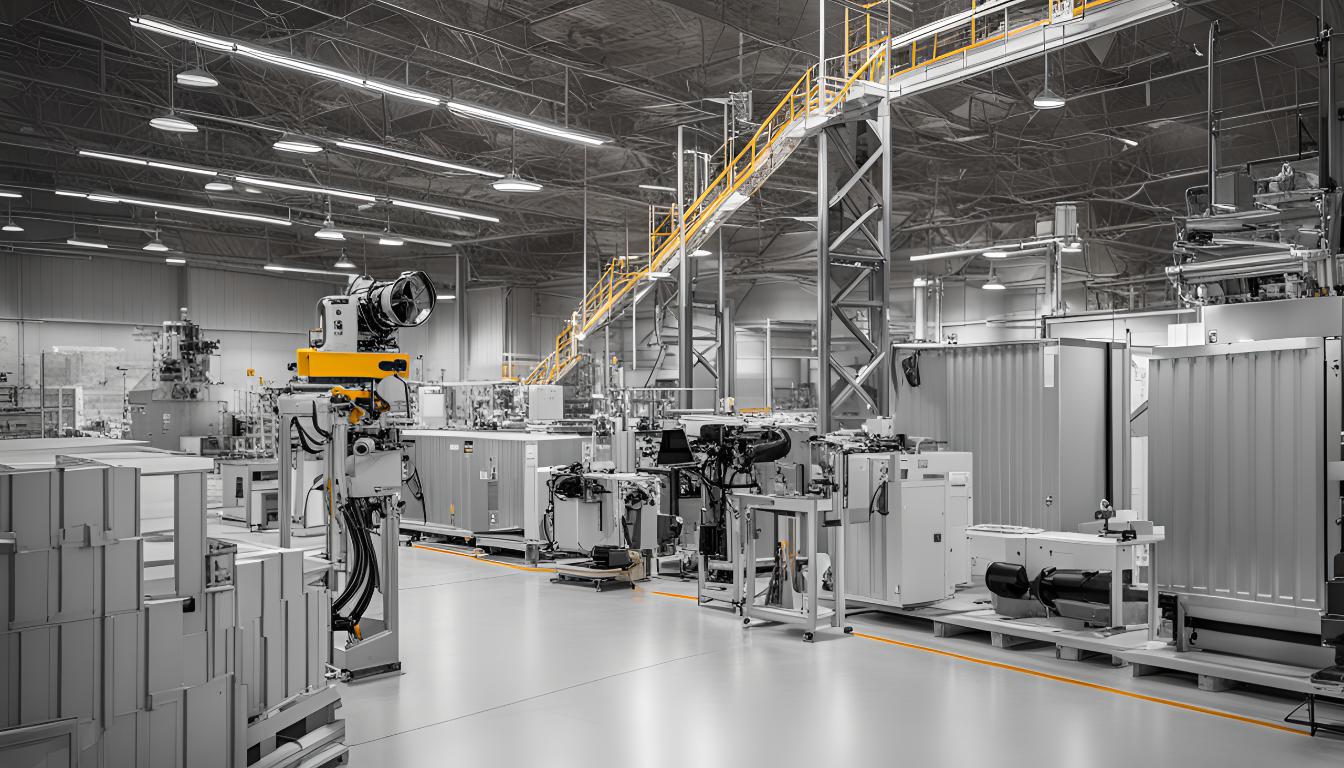25/04/2025
Fundamentals of Real-Time Surveillance Technology: How Image Processing Works
There is almost no sector left in the world that is not integrated with technology. In this context, real-time monitoring solutions using image processing technology are revolutionizing many areas. In this guide, we will discuss the basics of innovative technology, its operation and how it makes a difference in a wide range of areas from industry to security systems. We will detail how businesses maximize their efficiency through real-time monitoring technologies, data integration and automation. We will also share with you the effective ways to use these systems. Let's discover how image processing-supported real-time monitoring systems add value to the business world.

Revolutionary Developments Through Real-Time Monitoring Technologies
Real-time monitoring technologies, especially through image processing systems, are revolutionizing various industries. Image processing is the procedure of using computer algorithms to analyze data from visuals captured by digital cameras or sensors. This process includes interpreting images and making decisions, allowing systems to respond instantly.
Fundamentally, image processing is built on the ability to identify and analyze features such as color, light, and motion. This technology plays a vital role in areas like production line analysis and line tracking by detecting defects, enabling quality control, and optimizing automation processes. Various algorithms and mathematical operations process data in real time, ensuring accurate system performance.
These systems are equipped with high-speed camera technologies that can process hundreds or even thousands of frames per second. Thus, by providing real-time monitoring, they are capable of instantly detecting and responding to abnormalities or potential threats in the production process. This enhances both production continuity and safety.
The installation and management of image processing technologies include important details for successful integration and use. Properly designing and implementing both hardware and software requirements maximizes the efficiency of these systems. As a result, real-time monitoring and automation processes can operate at expected performance levels.
Real-Time Monitoring Applications: A Revolution in Industry and Security Systems
In the industrial sector, applying real-time monitoring technology enables more efficient and controlled management of production processes. This technology has revolutionized areas such as production line analysis and error detection. Real-time data instantly identifies malfunctions in production lines, minimizing downtime and maximizing capacity.
In security systems, real-time monitoring—thanks to high-resolution image processing—significantly enhances safety, especially in crowded areas and critical facilities. Images captured by cameras are processed instantly, and any potential threats are quickly identified. This process offers major advantages by reducing response time for security forces.
Another important industrial application of real-time monitoring is line tracking systems. These systems ensure proper product flow along assembly lines and make automatic corrections in case of deviations, improving the overall process. This not only increases product quality but also reduces waste.
Real-time monitoring technology plays a critical role in optimizing business processes, enhancing safety, and lowering operational costs across industrial and security systems. Its integration stands out as a key factor in shaping the future of industries.
Data Integration and Automation: Boosting Efficiency with Real-Time Monitoring
Real-time monitoring systems offer the key to increased efficiency in production line analysis, security systems, and many other areas. These systems collect and process data using advanced image processing technologies. The resulting data is then integrated with automation systems to optimize workflows and speed up decision-making processes.
Image processing-based monitoring systems play a critical role on production lines. For example, they can continuously inspect each product's quality on a production belt, detect defective items, and remove them. Such line tracking applications reduce material waste and maximize overall production quality.
Moreover, when these systems are integrated with machine learning and artificial intelligence technologies, automation reaches an even more advanced level. The data collected by image processing systems can be analyzed by algorithms, allowing machines to adjust themselves in real time.
This integration is especially important in industrial branches that carry out complex manufacturing and assembly operations. Efficiency, speed, and quality can all be maximized through the combination of image processing and automation technologies.
Establishing such integrated systems requires a detailed system analysis and needs assessment at the outset. However, the investment pays off by providing businesses with long-term competitive advantages and reduced operating costs. Therefore, keeping up with technological developments and investing in these systems when needed is strategically vital for businesses.
Effectively Using Real-Time Monitoring Systems
Effective use of real-time monitoring systems allows businesses to manage their operations more efficiently and effectively. This technology offers significant advantages, particularly in production, security, and service sectors. Proper system installation and adequate training for staff are essential for effective use.
The first step is identifying the requirements and goals of real-time monitoring. These goals help clearly define system expectations and guide the selection of the right technology. For example, for a system used in production line analysis, speed and error-free production capacity might be top priorities.
The second step is system integration. Image processing systems must work in harmony with other automation components. This integration ensures seamless and effective data flow. During integration, it's crucial that systems can exchange data and that this data is analyzed correctly.
The third and final step is continuous monitoring and evaluation. Image processing-based monitoring systems provide real-time data, so this data should be regularly analyzed and system performance evaluated. This way, adjustments can be made to improve efficiency and quickly resolve potential issues.
Frequently Asked Questions
What is image processing and how does it work?
Image processing is the procedure of applying mathematical operations on digital images to extract information,
enhance visuals, and perform analysis. This is usually done automatically using computer software.
Why is real-time data processing important?
Real-time data processing enables instant access to information from rapid data flows, allowing businesses and
systems to make fast and effective decisions based on live data.
How is real-time tracking achieved through image processing?
Image processing technologies can instantly recognize and track objects, people, or specific movements by analyzing
images from cameras. This process typically uses specialized algorithms and AI techniques.
Which industries use this technology?
Many sectors such as security, healthcare, automotive, manufacturing, and retail use image processing technologies
for real-time tracking and analysis.
What is the relationship between real-time image processing and automation?
Real-time image processing allows automation systems to quickly adapt to environmental changes, making automated
systems more intelligent and effective.
How is the data obtained through image processing evaluated?
The data is analyzed using pre-defined algorithms and AI models. Meaningful insights are extracted from this data to
support decision-making processes for relevant actions.
What does the future of image processing technology look like?
Image processing will continue to evolve alongside artificial intelligence and machine learning. These advancements
will lead to the development of smarter and more autonomous systems with broader application areas.

